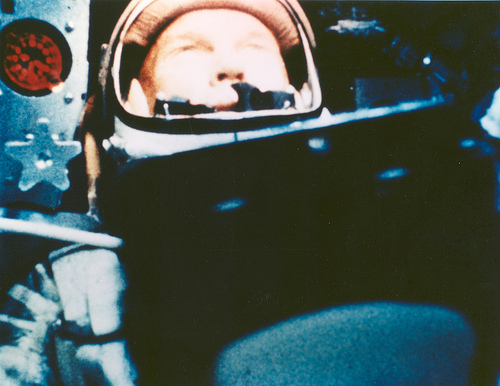
Incrementing a year on the calendar may be somewhat arbitrary, but it’s still a good excuse to take stock and remember where we’ve been so we can get a better handle on where we are going. With that in mind, here are some of the standout moments from the year 2016 in the realm of science and the intersection of science and faith.
- As the year began, the Ebola outbreak in West Africa was still being resolved. The epidemic has finally been contained, and recently it was announced that a vaccine tested during the epidemic proved to be 100% effective in preventing infection. That should significantly improve containment efforts for future outbreaks.
- Just as the Ebola outbreak wound down, the WHO declared that the Zika virus outbreak in Brazil and other parts of South America constituted a public health emergency because of its association with microcephaly. Prevention measures, the change in seasons and the urban focus of the Brazil Olympic games kept Zika exposure to a minimum for that event, and endemic transmission of the virus has not yet been established in the United States. Still, once the weather warms up in 2017 be prepared for Zika concerns to re-emerge.
- It was announced that gravitational waves had been observed for the first time. These waves were predicted by Einstein’s general relativity theory one hundred years ago, and required a significant collaboration to detect.
- The passing of John Glenn provided a chance to remember a pioneer of the space program, a public servant, and a faithful Christian who was comfortable with the word of God and the language of science.
- A computer program defeated a human master at the game of Go. The victory was a milestone for artificial intelligence in general, and specifically the field of deep learning, an extension of neural networks that leverages today’s increasingly parallel computer architecture. Algorithms based on deep learning already have found a number of applications such as piloting autonomous vehicles, and look to become significantly embedded in our decision making processes.
- Atmospheric carbon dioxide levels remained above 400ppm all year for the first time, a milestone for greenhouse gas accumulation in a year that will go down as the hottest recorded so far in the modern era. The announcement this year that the Antarctic ozone layer is recovering reminds us that global cooperation is possible to stop and reverse manmade environmental damage; we should press on to achieve similar results for greenhouse gases.
- The first human trials of CRISPR-based therapies began in China. CRISPR technology allows scientists to precisely and efficiently modify the genes of living cells. Current trials are focused on treating certain cancers, but the potential uses are numerous and wide-ranging, from preventing disease to creating the fabled “designer babies.” The ethics of CRISPR are likely to be a focal point of conversations about the future of medicine and biotechnology.
- Feathers and tail vertebrae were discovered in 99-million-year-old amber. Tissues samples of any sort that old are noteworthy finds, but this one was especially exciting because it appears to directly confirm that dinosaurs had feathers. Of course, any find that old will generate controversy; everything from the age of the sample to the identification of the source organism has been disputed.
- Evolutionary biology also made an appearance on the big screen in X-Men: Apocalypse, although the film was too much of a dud at the box office and too muddled narratively to spark the kind of conversation I expected. Still, I think the film revealed a lot about how the wider public thinks about the evolution of the human race and also of religion. Meanwhile, Doctor Strange wound up having a lot to say about reconciling science and faith more generally, and Arrival proved to be a very timely meditation on the challenges of communication across language and culture barriers.
- How I Changed My Mind About Evolution, a collection of personal reflections on reconciling Christian faith with evolutionary biology, was published.
- Evolutionary biology wound up being a central theme of my science reader question series, which also explored the nature of time and matters of statistics.
- Your questions also form the basis of an ongoing series funded by a STEAM grant to ESN. Look for this series to continue and expand in 2017.
I’m grateful for the chance to explore the intersection of science and faith with you for another year. I appreciate all of the comments, questions and feedback I’ve gotten from readers. I’d love to hear your reflections on 2016 and what you’d like to hear more about in the year to come. Feel free to share your thoughts in the comments below, and join me in 2017 to see where science takes us.
Andy has worn many hats in his life. He knows this is a dreadfully clichéd notion, but since it is also literally true he uses it anyway. Among his current metaphorical hats: husband of one wife, father of two teenagers, reader of science fiction and science fact, enthusiast of contemporary symphonic music, and chief science officer. Previous metaphorical hats include: comp bio postdoc, molecular biology grad student, InterVarsity chapter president (that one came with a literal hat), music store clerk, house painter, and mosquito trapper. Among his more unique literal hats: British bobby, captain’s hats (of varying levels of authenticity) of several specific vessels, a deerstalker from 221B Baker St, and a railroad engineer’s cap. His monthly Science in Review is drawn from his weekly Science Corner posts — Wednesdays, 8am (Eastern) on the Emerging Scholars Network Blog. His book Faith across the Multiverse is available from Hendrickson.

Leave a Reply